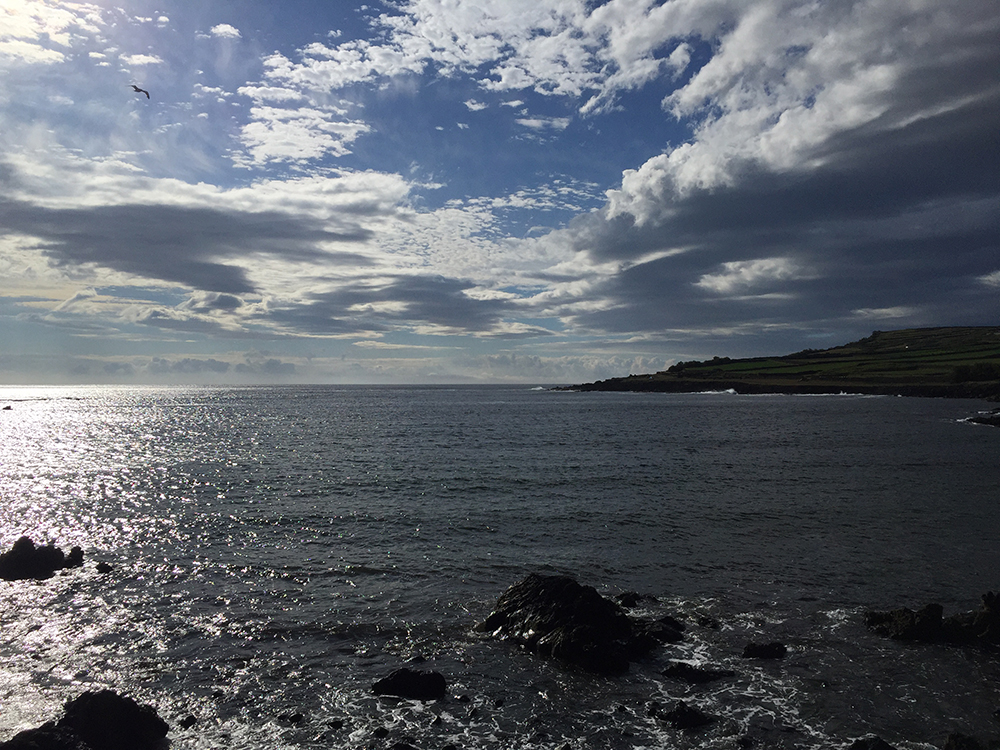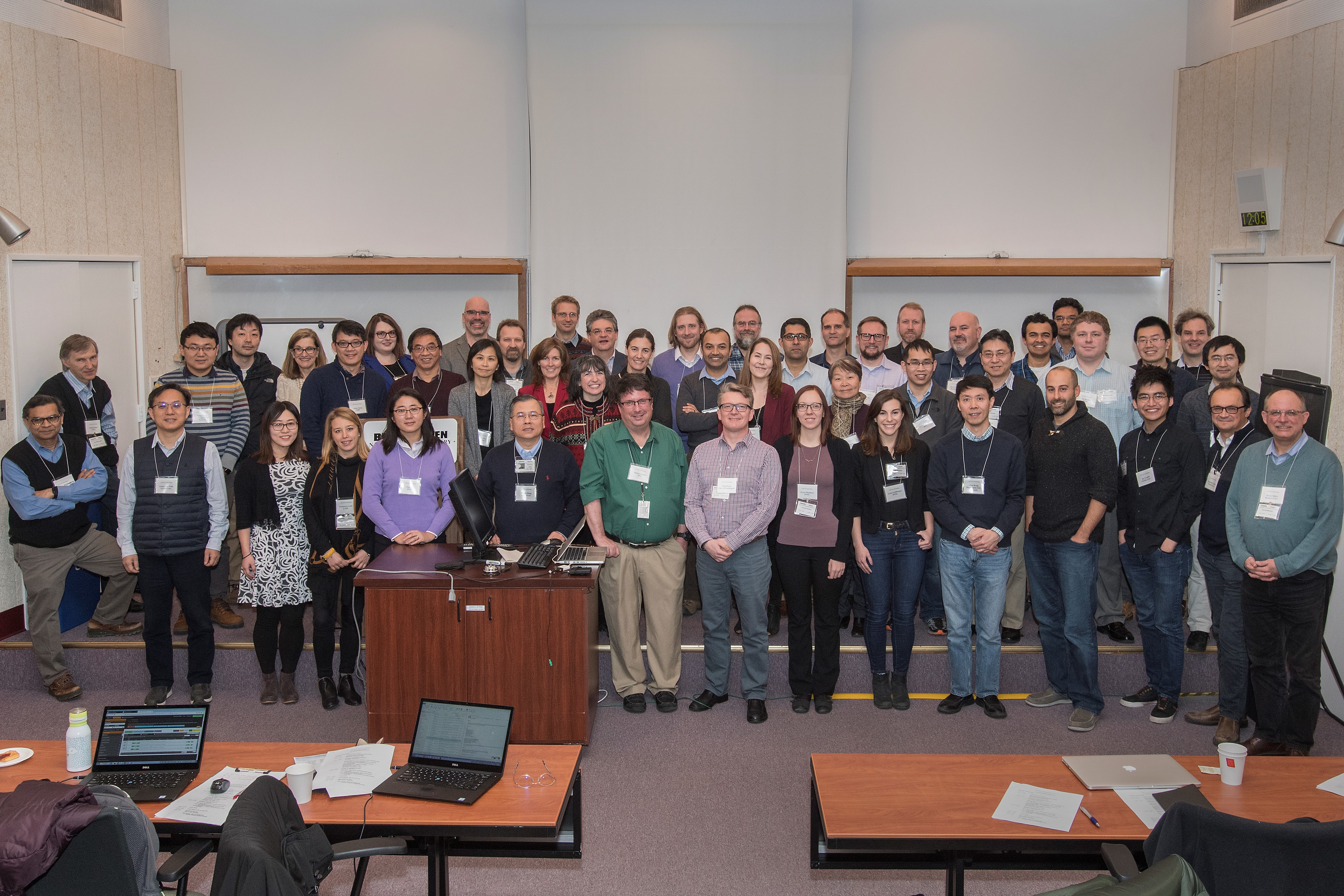ACE-ENA Workshop Shows Progress in Achieving Scientific Goals
Published: 19 February 2019
Mike Jensen, an atmospheric scientist at Brookhaven National Laboratory (BNL) in Upton, New York, wrote the following synopsis of a January 29−30, 2019, workshop at BNL on the state of research and data sets from the Aerosol and Cloud Experiments in the Eastern North Atlantic (ACE-ENA) field campaign.

Along with the cold temperatures and windy conditions associated with the latest descent of the polar vortex over the continental United States, an international team of more than 50 researchers gathered at Brookhaven National Laboratory (BNL) to discuss the clouds and aerosols of the Eastern North Atlantic.
The cloud and aerosol properties of the marine boundary layer play an important role in the global energy balance. Despite this importance, there is still much to learn about this system so that the important processes driving the cloud and aerosol life cycle can be properly represented in large-scale atmospheric models.
The Aerosol and Cloud Experiments in the Eastern North Atlantic (ACE-ENA) field campaign took place in June−July 2017 and January−February 2018, centered around the Atmospheric Radiation Measurement (ARM) user facility’s ENA atmospheric observatory on Graciosa Island in the Azores.
The campaign involved the deployment of the ARM Aerial Facility’s Gulfstream-159 (G-1) aircraft to sample the remote oceanic boundary layer toward improved understanding of aerosol and cloud processes.
An ACE-ENA Report Card
A little less than one year after the completion of the campaign, the ACE-ENA workshop—organized by Mike Jensen, BNL; ACE-ENA principal investigator Jian Wang, Washington University in St. Louis; and Rob Wood, University of Washington—brought researchers together to discuss the status of data sets, share preliminary research activities, build collaborations, and determine next steps.
Following a welcome from Allison McComiskey, new chair of the BNL Environmental and Climate Sciences Department, and Wang, members of the ARM Aerial Facility—including Jason Tomlinson, Alyssa Matthews, and Fan Mei from Pacific Northwest National Laboratory (PNNL) in Richland, Washington—and ARM instrument mentors and guest scientists discussed the status of data sets collected during 40 ACE-ENA flights.
This comprehensive data set has been extensively quality-checked and is freely available from the ARM Data Center.
One strength of the ACE-ENA campaign was the combination of the G-1 measurements with the surface-based, long-term measurements of ARM.
Data to Boost Marine Boundary Layer Analysis
Details about the radar data sets were presented by Brad Isom, PNNL. Stephen Springston, BNL, shared data status from the Aerosol Observing System. Scott Giangrande, ARM translator from BNL, updated the group on progress on the development of value-added products for the ACE-ENA campaign.
It was clear from these presentations that the extensive data set collected will offer the basis for new analysis of marine boundary layer processes for years to come. Mark Miller, Rutgers University, was heard to say, “I have been waiting my whole career for a marine boundary layer cloud data set that was this complete!”
After learning of the current status of the measurements collected during the campaign, the workshop switched focus to how people are using the data for the scientific investigations.
A total of 24 presentations, from university and national laboratory researchers, covered diverse topics ranging from new particle formation, chemical composition of aerosol particles, and the entrainment-mixing process to retrieval of precipitation rates, modeling of cloud and drizzle properties, and the influence of dry intrusions on the boundary layer.
Progress, and What’s Next
Even in the short time since the ACE-ENA data collection ended, a great deal of progress toward answering important questions about the marine boundary layer has already been made.
The workshop ended with discussion and identification of a number of opportunities for collaboration, needs, and next steps.
Collaborative activities focused on aerosol composition characterization, reconciling differences between the number of cloud condensation nuclei and cloud droplets. Other collaborative areas identified included microphysical retrievals, mixing and entrainment studies, along with much more.
There are also plans for an overview article to be submitted to the Bulletin of the American Meteorological Society.
As ACE-ENA research advances, the workshop participants plan to meet again at the Joint ARM User Facility/Atmospheric System Research (ASR) Principal Investigators Meeting to be held in June 2019 in Rockville, Maryland.
By all accounts, the workshop was a success, and helped build the important collaborations necessary to accelerate the science and answer some of the mysteries of the remote marine boundary layer.

Keep up with the Atmospheric Observer
Updates on ARM news, events, and opportunities delivered to your inbox
ARM User Profile
ARM welcomes users from all institutions and nations. A free ARM user account is needed to access ARM data.


















